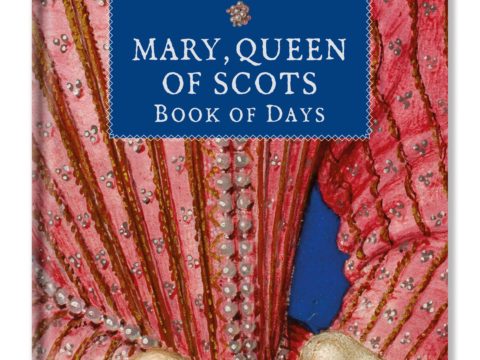Katharine of Aragon: Life Story
Chapter 10 : Diplomacy
The period 1520 - 22 was, for Katharine, a time when she was again politically prominent, although in her role as Henry’s consort and the embodiment of alliances, rather than in an active role as Regent. In 1520, Charles visited England en route between Spain and the Netherlands. He landed at Dover on 26th May and, following a lavish reception at Canterbury, had several private meetings with Henry and Katharine, although the substance of their discussions is not known. The trio also agreed to a second meeting to take place in the summer, after Henry and Katharine had finished their planned diplomatic visit to France.
A few days after Charles’ departure, the English king and queen sailed for Calais, to meet François I and his wife, Queen Claude, at the most magnificent public display of Henry’s reign, the Field of Cloth of Gold. Katharine was treated with all possible honour by Henry – her suite of followers numbered 1,175 and she had her own lodgings and tents. Whilst the monarchs showed off to each other, Katharine and Claude seem to have struck up a genuine warmth.
Despite the elaborate and costly junketings of the meeting, it made little difference to political reality – Henry and Katharine left the meeting to travel to Gravelines, on the border with the Netherlands where they met Charles and his aunt, Archduchess Marguerite. Katharine had not seen the Archduchess since she had left Spain, following the death of Juan, but we can imagine that they had a joyful reunion, and perhaps reminisced about the Spanish court of the 1490s.
At the meeting, it was agreed that the betrothal between Mary and the Dauphin would be broken off, and Mary would marry Charles when she reached the age of consent, in 1528. For the time being, the match was kept secret, but for Henry, the thought that his grandson might one day be Emperor was presumably some compensation for knowing that England would be absorbed into Charles’ fiefdoms.
On 25th August 1521 a formal treaty was signed between Henry and Charles. It was not just a peace-time alliance – the signatories bound themselves to invade France in 1523, if Wolsey’s efforts at reconciling François and Charles failed.
The treaty was extended in November to include the kings of Portugal, Hungary and Denmark, ruled by Katharine’s brother-in-law and the husbands of two of her nieces respectively. Charles’ power grew when his captain, Prospero Colonna achieved a notable victory on 27th April 1522 at La Biococca, which reversed Francois’ triumph at Marignano and gave Charles dominance in northern, as well as southern Europe.
Katharine could bask in her nephew’s reflected glory, especially when he paid a second diplomatic visit to England in May 1522. The visit lasted six weeks and was a triumph of logistical organisation by Wolsey. Charles was accompanied by a large suite of nobles from his various territories as well as his administrative staff. Having travelled slowly from the coast, accompanied from Canterbury by Henry, Charles met Katharine and Mary at Greenwich on the evening of 2nd June where Katharine cried with delight, and Mary conceived a trust and affection for her cousin that would last for over thirty years.
Over the weeks of the visit, much attention was paid to the long history of alliance between England and Burgundy and Charles’ own descent, like both Katharine and Henry, from John of Gaunt. The monarchs discussed the ins and outs of the preparations they would make for war with France and on 16th June Henry formally broke off his alliance with François on the pretext that the King of France had caused dissension within Christendom, preventing Europe from addressing the Ottoman menace.
The public treaty of 16th June was followed up by a private treaty which again confirmed the betrothal of Charles to Princess Mary. Their oldest son would inherit the throne of England, and with it, English claims (no matter how unrealistic) to the throne of France. There were also some financial arrangements whereby Charles would compensate Henry for the loss of the pensions and indemnities to the English crown following previous wars with France. As Henry’s ally and future son-in-law, Charles was then invested with the Order of the Garter.
It was all very well to promise war, but Henry did not have the money to deliver. The costs of the campaigns of 1512 and 1513 and Henry’s extravagant lifestyle – not least the expenses of the Field of Cloth of Gold and the entertainment of Charles and his train for six weeks - had made serious inroads into the royal treasury. He was obliged to call Parliament to request funds. The Commons were unimpressed by Henry and Wolsey’s demands and a very small sum was voted, to last for four years. In recognition of the financial limitations of both Henry and Charles it was agreed that the main invasion of France would be postponed until 1525. Nevertheless both parties would undertake some military action 1524 – Charles felt that he had done his part in various campaigns but that Henry failed to deliver on his promises.
Katharine of Aragon
Family Tree






